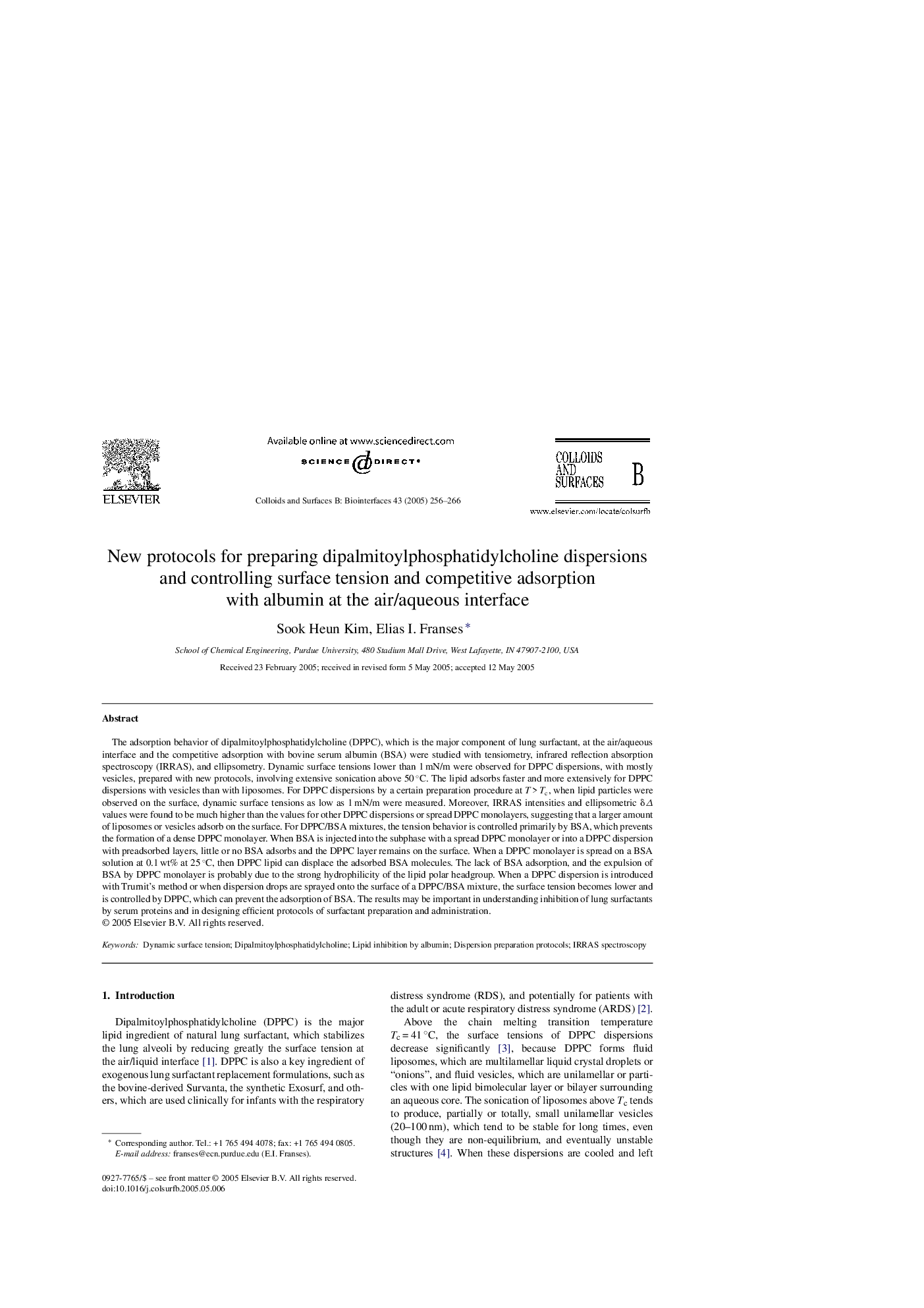| کد مقاله | کد نشریه | سال انتشار | مقاله انگلیسی | نسخه تمام متن |
|---|---|---|---|---|
| 9678366 | 1454323 | 2005 | 11 صفحه PDF | دانلود رایگان |
عنوان انگلیسی مقاله ISI
New protocols for preparing dipalmitoylphosphatidylcholine dispersions and controlling surface tension and competitive adsorption with albumin at the air/aqueous interface
دانلود مقاله + سفارش ترجمه
دانلود مقاله ISI انگلیسی
رایگان برای ایرانیان
کلمات کلیدی
موضوعات مرتبط
مهندسی و علوم پایه
مهندسی شیمی
شیمی کلوئیدی و سطحی
پیش نمایش صفحه اول مقاله

چکیده انگلیسی
The adsorption behavior of dipalmitoylphosphatidylcholine (DPPC), which is the major component of lung surfactant, at the air/aqueous interface and the competitive adsorption with bovine serum albumin (BSA) were studied with tensiometry, infrared reflection absorption spectroscopy (IRRAS), and ellipsometry. Dynamic surface tensions lower than 1 mN/m were observed for DPPC dispersions, with mostly vesicles, prepared with new protocols, involving extensive sonication above 50 °C. The lipid adsorbs faster and more extensively for DPPC dispersions with vesicles than with liposomes. For DPPC dispersions by a certain preparation procedure at T > Tc, when lipid particles were observed on the surface, dynamic surface tensions as low as 1 mN/m were measured. Moreover, IRRAS intensities and ellipsometric δΠvalues were found to be much higher than the values for other DPPC dispersions or spread DPPC monolayers, suggesting that a larger amount of liposomes or vesicles adsorb on the surface. For DPPC/BSA mixtures, the tension behavior is controlled primarily by BSA, which prevents the formation of a dense DPPC monolayer. When BSA is injected into the subphase with a spread DPPC monolayer or into a DPPC dispersion with preadsorbed layers, little or no BSA adsorbs and the DPPC layer remains on the surface. When a DPPC monolayer is spread on a BSA solution at 0.1 wt% at 25 °C, then DPPC lipid can displace the adsorbed BSA molecules. The lack of BSA adsorption, and the expulsion of BSA by DPPC monolayer is probably due to the strong hydrophilicity of the lipid polar headgroup. When a DPPC dispersion is introduced with Trurnit's method or when dispersion drops are sprayed onto the surface of a DPPC/BSA mixture, the surface tension becomes lower and is controlled by DPPC, which can prevent the adsorption of BSA. The results may be important in understanding inhibition of lung surfactants by serum proteins and in designing efficient protocols of surfactant preparation and administration.
ناشر
Database: Elsevier - ScienceDirect (ساینس دایرکت)
Journal: Colloids and Surfaces B: Biointerfaces - Volume 43, Issues 3â4, 10 July 2005, Pages 256-266
Journal: Colloids and Surfaces B: Biointerfaces - Volume 43, Issues 3â4, 10 July 2005, Pages 256-266
نویسندگان
Sook Heun Kim, Elias I. Franses,